On April 25, 1890, US President Benjamin Harrison announced the choice of Chicago as the site of the Universal Exposition , also called World's Columbian Exposition . Although the central theme of the exhibition was the fourth centenary of the arrival of Christopher Columbus in the so-called New World, the fairgrounds did not open to the public until May 1, 1893, a year later than planned. That event had a great impact on the appearance of Chicago and became a symbol of the then emerging American nationalist sentiment, marked by industrialization and population growth. Until October 30, the closing date, more than 27 million people visited the exhibition. The busiest day was October 9, the so-called Chicago Day for commemorating the great fire of 1871, in which 716,881 people attended.
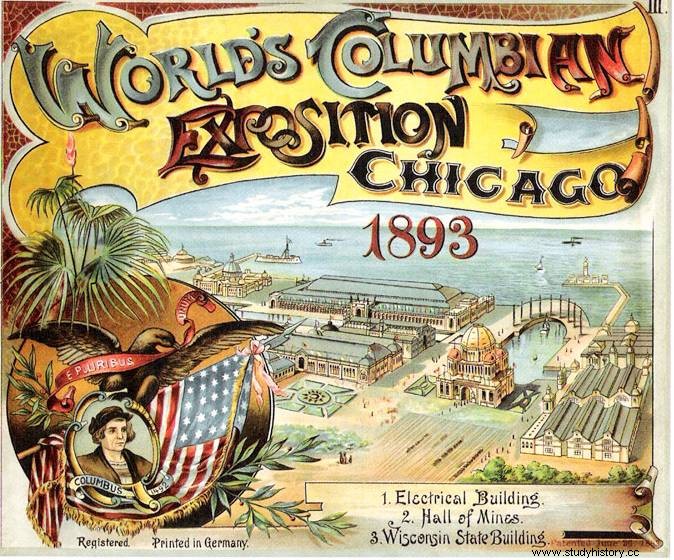
On an area of 290 hectares, in Jackson Park and the Midway Plaisance , Daniel H. Burnham and Frederick Law Olmstead they designed a small city that housed more than 200 buildings, amusement parks, canals and lagoons. Some of the most popular exhibits or attractions were the Ferris Wheel, a 76-meter steel structure with capacity for more than 2,000 people; the replica of a street in Cairo, where the dancer Little Egypt was all the rage; the curiosities of the Hall of Agriculture (an 11-ton cheese or a sculpture of the Venus de Milo made with more than 680 kg of chocolate); a Viking longship; a 21-meter tower of light bulbs in the Electricity Building, where several demonstrations with electricity were made; the Statue of the Republic or the first Wheel of Fortune.
Although the success of the Chicago World's Fair was punctual, its influence lasted once it closed its doors, since many of the products presented there later became typical of the American way of life:flavored chewing gum Juicy Fruit , the dishwasher, Aunt Jemina pancake flour , popcorn and caramelized peanuts Cracker Jack , Quaker Oats oatmeal cereals … In addition, the conferences and congresses that were given influenced the formation of the nation's thought.
Taking advantage of the pull of the exhibition, the issuance of a series of coins related to the event was approved, although it is true that they were not very successful, and another series of stamps, which would mean the first edition of commemorative stamps issued in the USA . Logically, Columbus was also the protagonist of this collection. Although initially it was thought that the stamps would be bicolor, the idea was discarded due to the high cost. The series in question, with a total face value of $16.34, was made up of 16 stamps (1,2,3,4,5,6,8,10,15,30,50 cents and 1,2,3 4.5 dollars) in which works of art related to the life of Christopher Columbus were represented. The first criticisms were immediate and came from the amount of the stamps, to date a stamp had never been issued with a value greater than 90 cents, and due to the size, they were double the rest of the stamps. The Post Office Department justified its decision on the grounds that, being commemorative, they should be differentiated from the rest by being larger in size, and that the $2 to $5 stamps were intended for collectors and not for regular postage use.
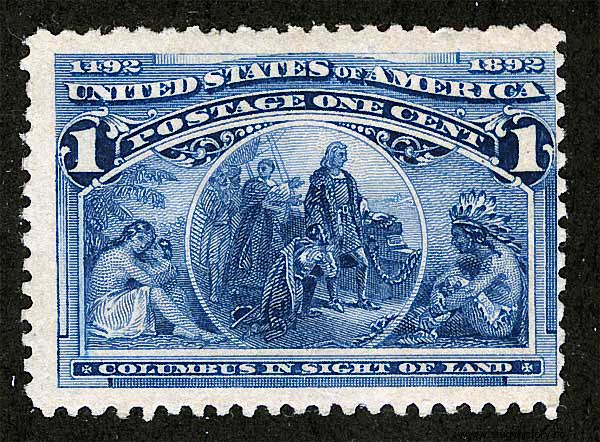
Until April 2, 1894, the date on which they were withdrawn from circulation, around 2 billion Columbian stamps had been sold with a total face value of more than 40 million dollars.
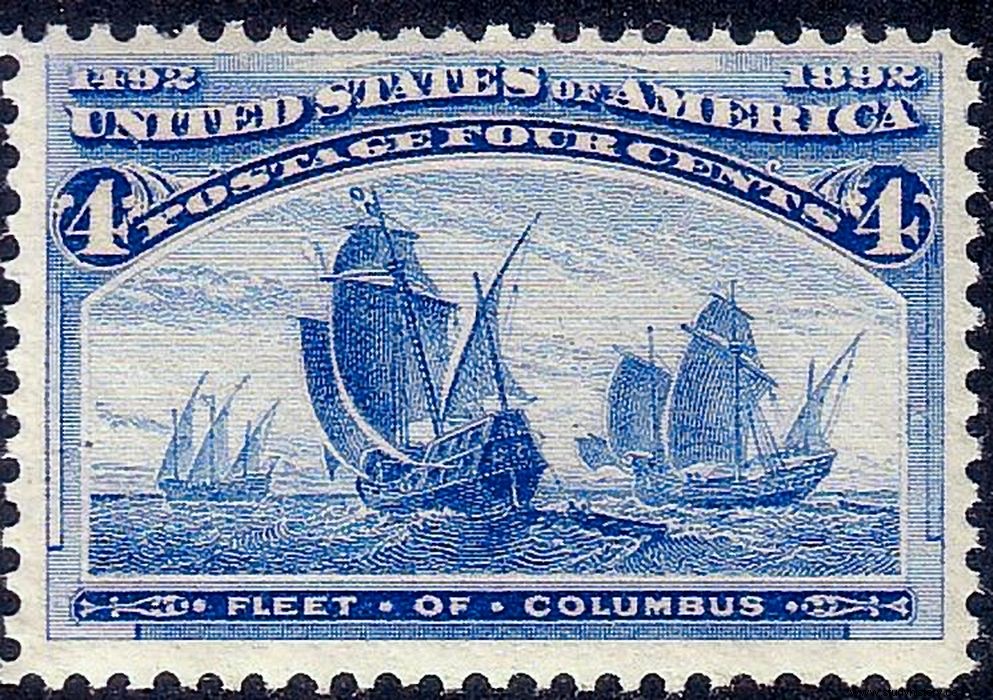
Some of the stamps, specifically those of 5 and 15 cents and those of 1 and 4 dollars, had another peculiarity... it was the first time that the image of a woman appeared on a US stamp, and that woman was none other than Queen Isabel the Catholic .
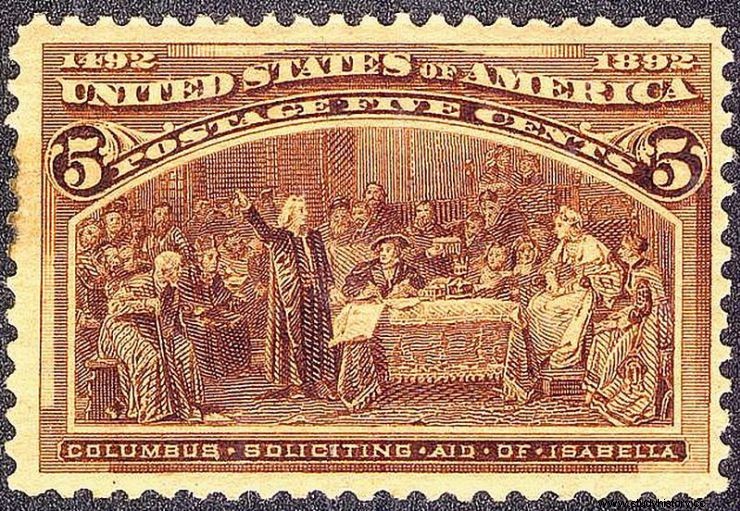
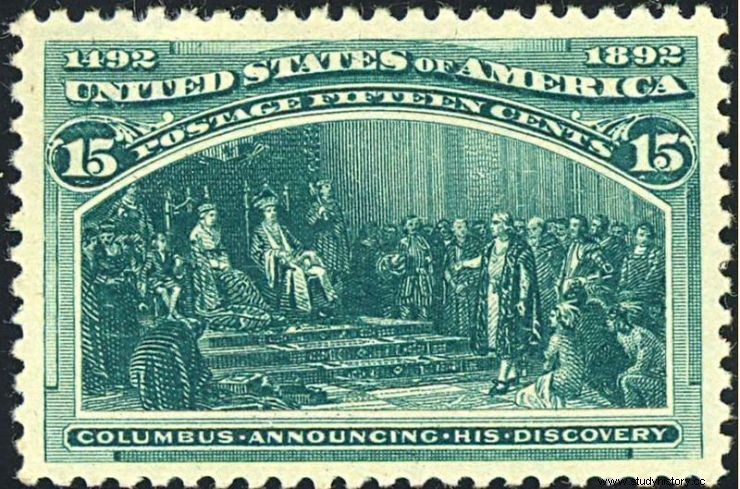

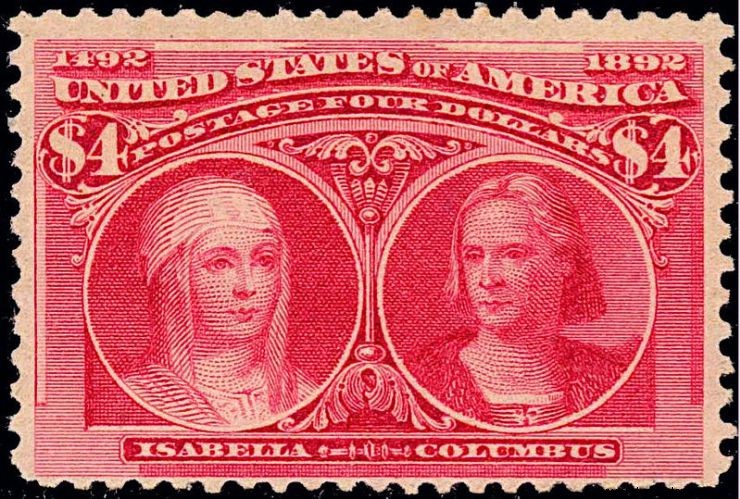
In 1992 Correos jointly with the USA, Italy and Portugal, issued a series that reproduced that collection of 16 stamps.

